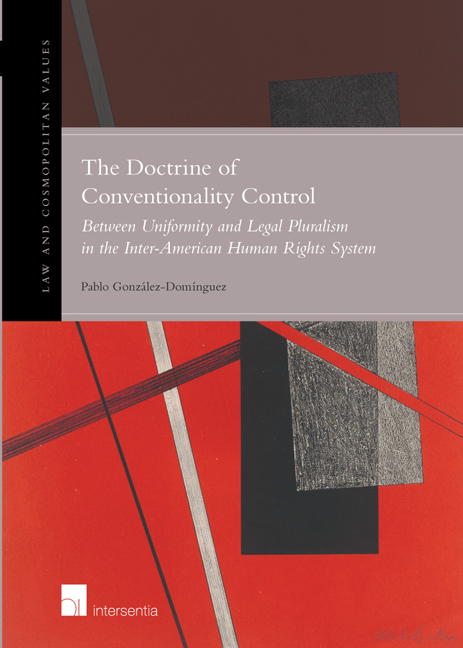 The Doctrine of Conventionality Control
The Doctrine of Conventionality Control Published online by Cambridge University Press: 11 October 2018
Various modern constitutions have confronted this question [the connection between the domestic system and the international system] and provided solutions that “build a bridge” between the two legal orders that ultimately benefit that who must be favored: the human being … If there is such clear and unequivocal connection – or at least one that is sufficient and intelligible, and that it is not lost in uncertainties or a diversity of interpretations – and international instruments are immediately applicable in the domestic sphere, domestic courts shall carry out their own “conventionality control”.
Sergio García Ramírez Reasoned Concurrent Opinion in the Aguado-Alfaro Case (2006)INTRODUCTION
The Inter-American Court of Human Rights has progressively defined the normative aspects of the doctrine of conventionality control in its jurisprudence. The foundational cases of Almonacid Arellano et al. v. Chile, Dismissed Congressional Employees (Aguado-Alfaro) v. Peru, and Heliodoro Portugal v. Panama were complemented in important aspects by the decisions of Boyce et al. v. Barbados, Radilla Pacheco v. Mexico, Cabrera Garcia and Montiel Flores v. Mexico, Gelman v. Uruguay, Santo Domingo Massacre v. Colombia, and more recently in Andrade Salmón v. Bolivia.
The progressive development of conventionality control in the Court's jurisprudence makes it possible to say that the evolution of this doctrine has had an empirical nature. It has responded to the particular challenges that the Court identified in concrete cases, especially when it found that the existence, interpretation and/or enforcement of domestic laws were the causes of human rights violations at the State level. For this reason, the specific characteristics of conventionality control cannot be understood or evaluated either in the abstract–as a“finished”doctrine created in Almonacid–or by just looking at the foundational cases, or by just looking at the last decision where the doctrine was mentioned. It is necessary to analyze all the different elements of the achieve a proper understanding of the specific obligations derived from its existence.
The approach followed by the Court to develop conventionality control might produce uncertainty about what is the exact content of this doctrine. This condition has been a legitimate source of concern and confusion among scholars and judges. Several questions might be formulated in this sense: Is it possible to define conventionality control?
To save this book to your Kindle, first ensure [email protected] is added to your Approved Personal Document E-mail List under your Personal Document Settings on the Manage Your Content and Devices page of your Amazon account. Then enter the ‘name’ part of your Kindle email address below. Find out more about saving to your Kindle.
Note you can select to save to either the @free.kindle.com or @kindle.com variations. ‘@free.kindle.com’ emails are free but can only be saved to your device when it is connected to wi-fi. ‘@kindle.com’ emails can be delivered even when you are not connected to wi-fi, but note that service fees apply.
Find out more about the Kindle Personal Document Service.
To save content items to your account, please confirm that you agree to abide by our usage policies. If this is the first time you use this feature, you will be asked to authorise Cambridge Core to connect with your account. Find out more about saving content to Dropbox.
To save content items to your account, please confirm that you agree to abide by our usage policies. If this is the first time you use this feature, you will be asked to authorise Cambridge Core to connect with your account. Find out more about saving content to Google Drive.